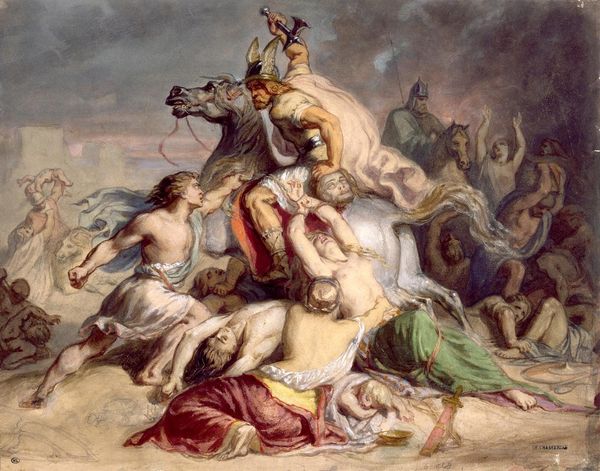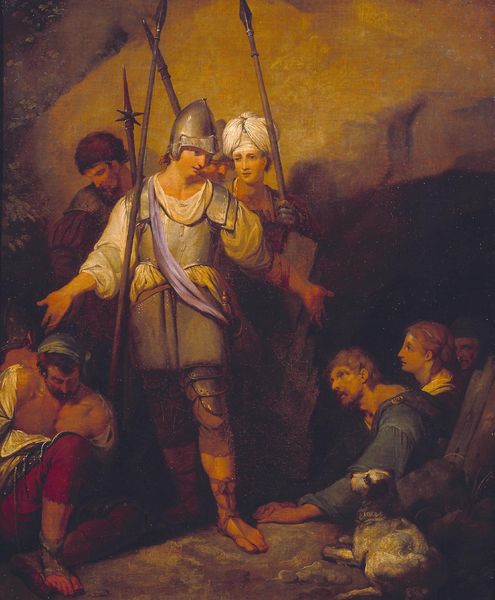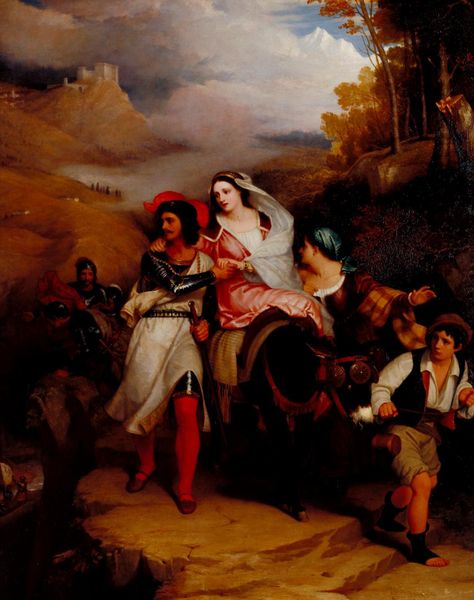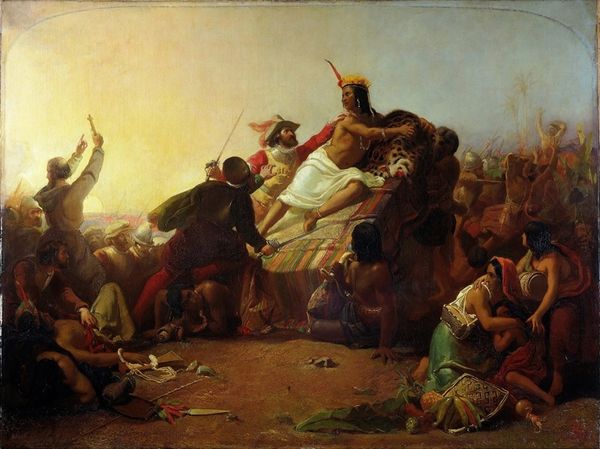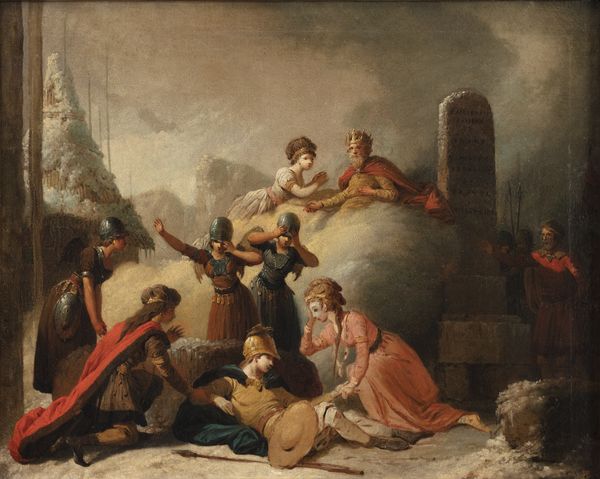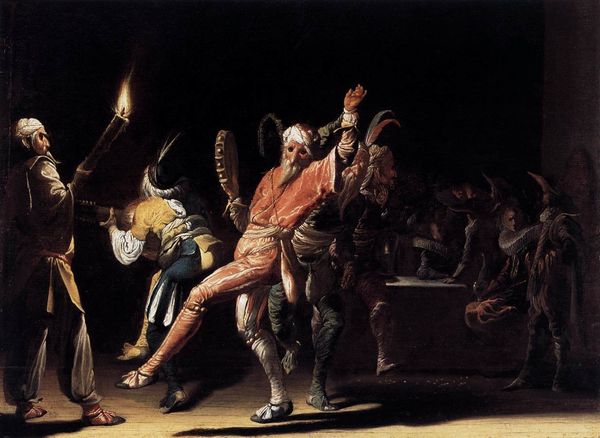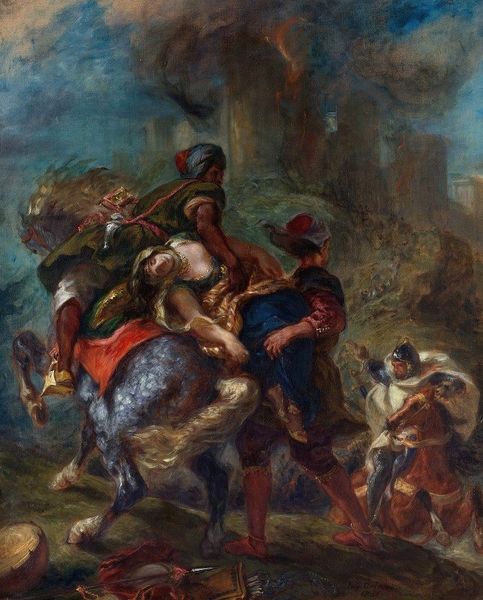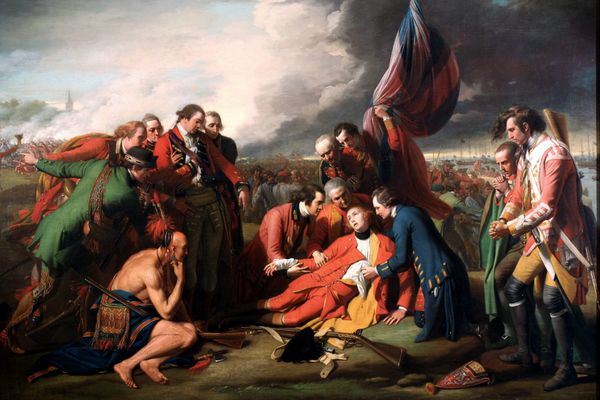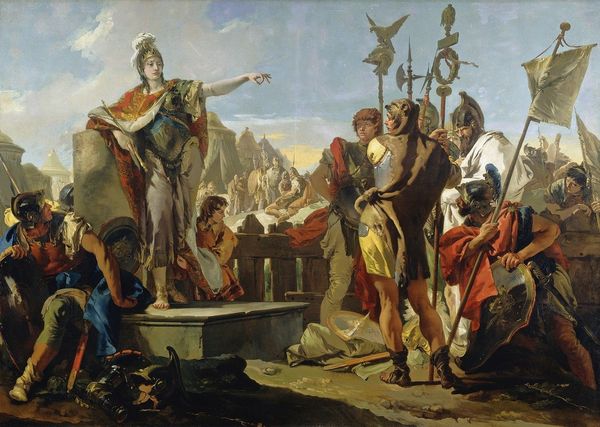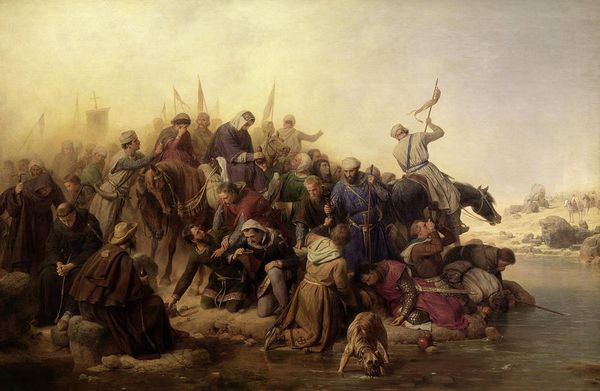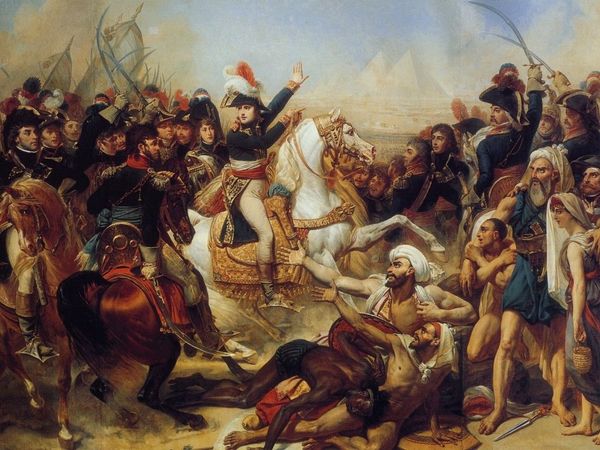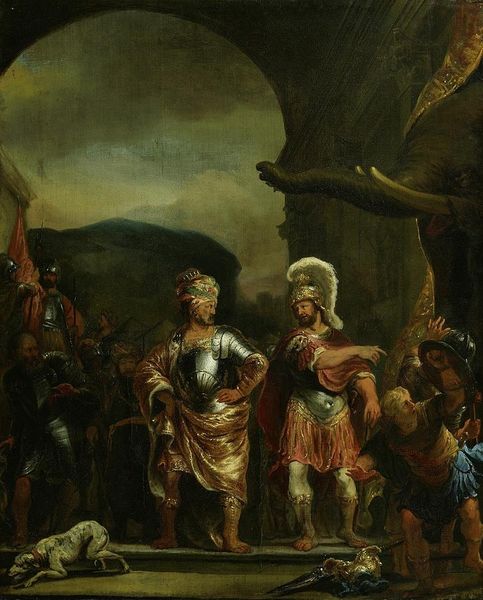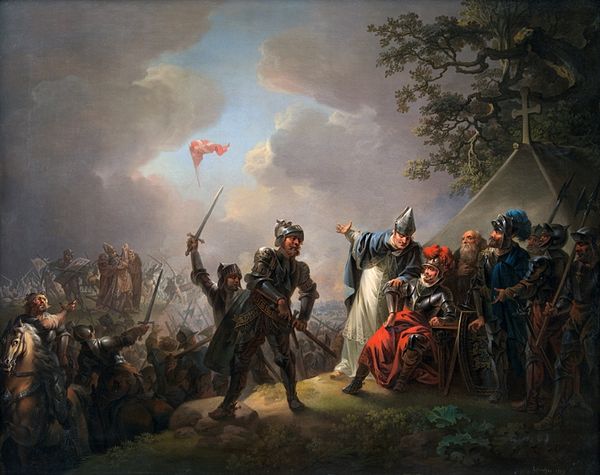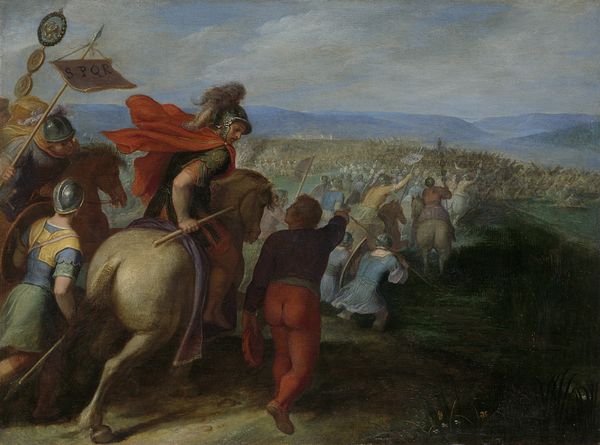
Copyright: Public Domain: Artvee
Curator: Standing before us, we have "Wacław’s farewell to Maria" painted in 1856 by Józef Simmler. It is an oil painting that presents a dramatic parting scene set against a tumultuous sky. Editor: The initial impact is powerful. The contrast between the armored figure and the dark-clothed woman, juxtaposed with the brooding background, suggests impending doom or, at the very least, great sorrow. Curator: Indeed. Simmler paints into a romanticized view of Polish history, specifically a farewell that hints at the tragic events of the past. It is presented as a historic genre painting, popular at that time for eliciting Polish patriotism under foreign rule. The choice of attire for Wacław speaks to this desire to connect the past to the present plight of the people. Editor: The iconography of the painting deepens this connection. Her black dress with a thin blue sash acts as a funereal element, emphasizing Maria's role in this farewell. It signifies deep personal sacrifice mirrored by historical adversity and points to mourning customs. The setting is domestic, a cottage, with a world war outside, amplifying an individual emotional event. The figures on horses add visual texture, but also emphasize how their farewell acts as the start of a broader series of dire happenings. Curator: We have to acknowledge the socio-political elements. Simmler was creating this in a time when Polish national identity was repressed under foreign empires, this dramatic farewell could have resonated deeply. The painting offers an artistic voice speaking to themes of resistance and the call to defend one's homeland. It evokes both personal loss and communal memory. Editor: Exactly, and while Wacław looks back at Maria as he makes a grand gesture, his helmet mirrors his intent and perhaps societal duty, he's ready to leave while she lingers for him with their embrace. The colors in their clothing act as a visual clue, red hues versus dark hues that make clear they're in opposing emotional places. Curator: The popularity of the art reflects on art as a public endeavor and tool to ignite national pride in times of cultural repression. This romanticized visual serves more than as mere artwork. Editor: Absolutely. By using potent symbolic language, Simmler captures the essence of separation and sacrifice. It evokes the emotional tension that persists over time, speaking beyond immediate circumstance to the common tragedy of life, death, and war.
Comments
No comments
Be the first to comment and join the conversation on the ultimate creative platform.
